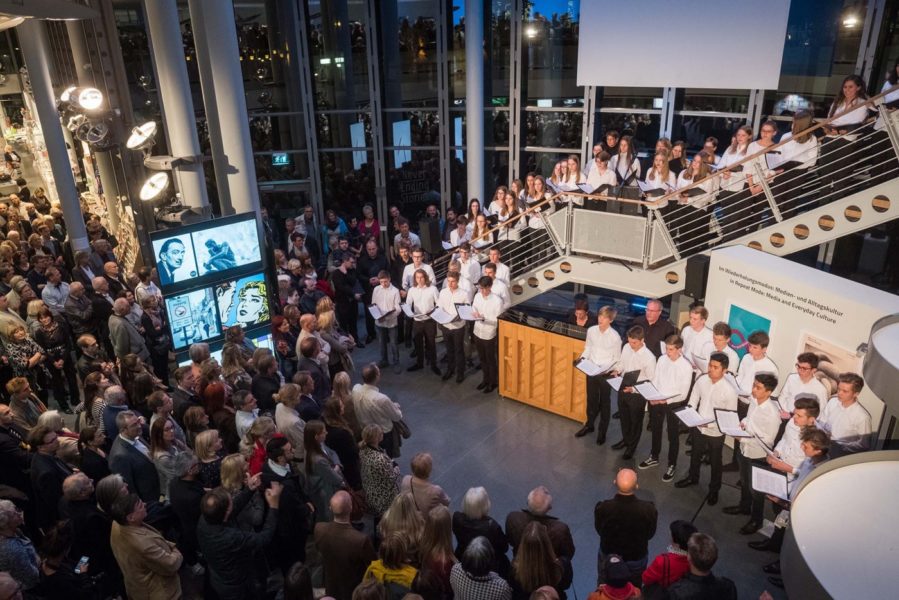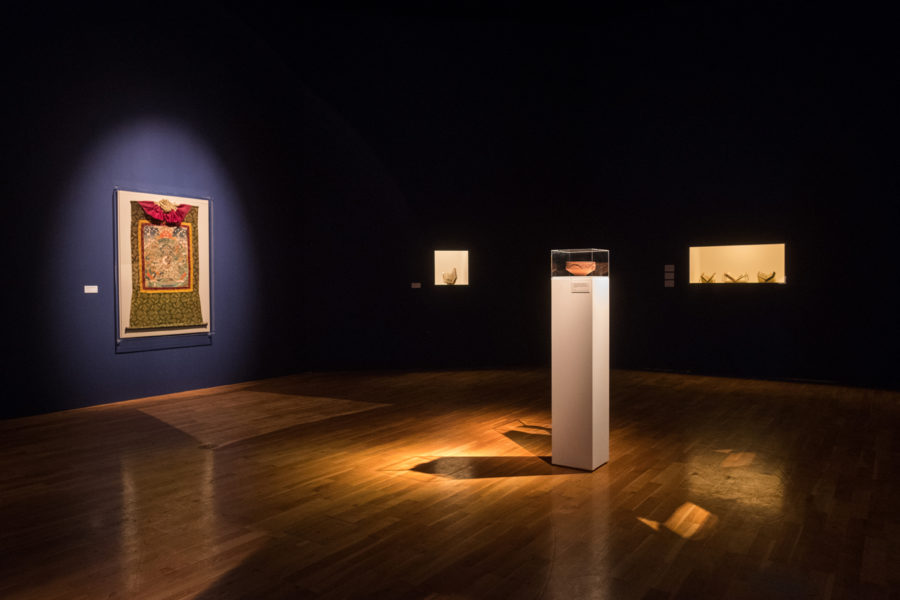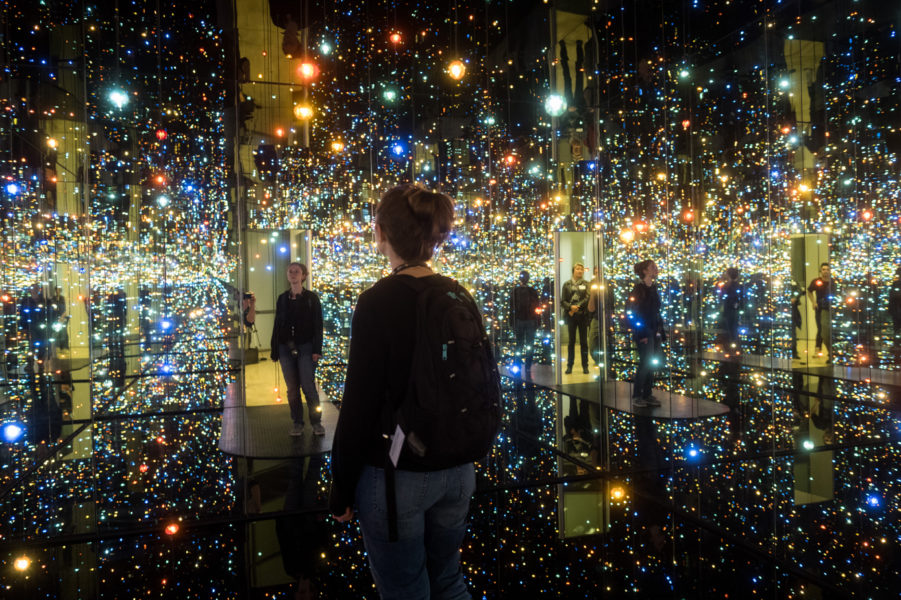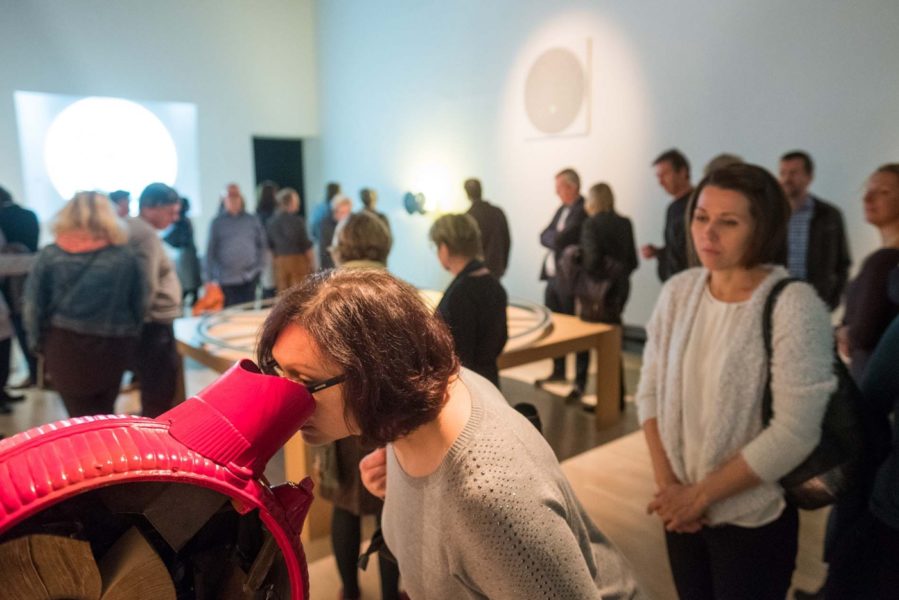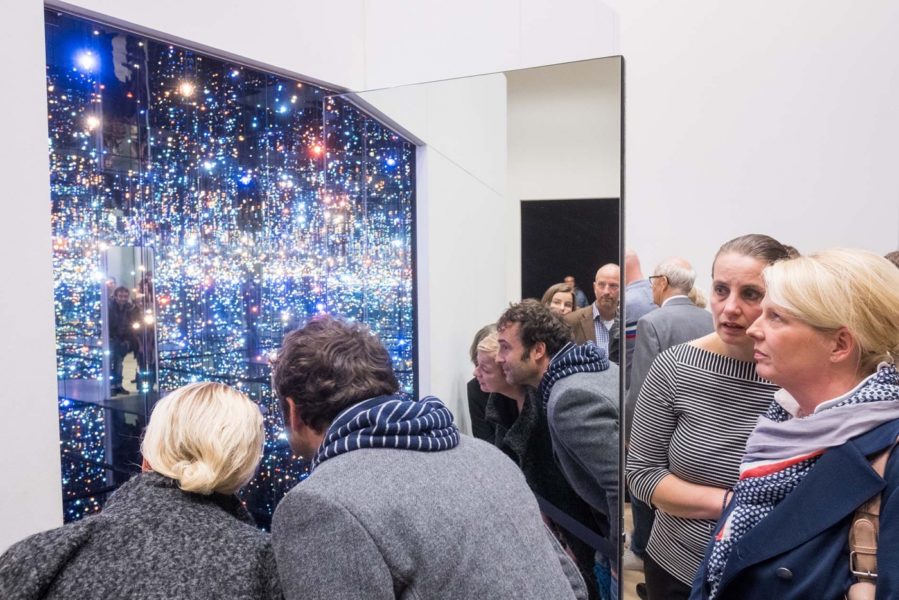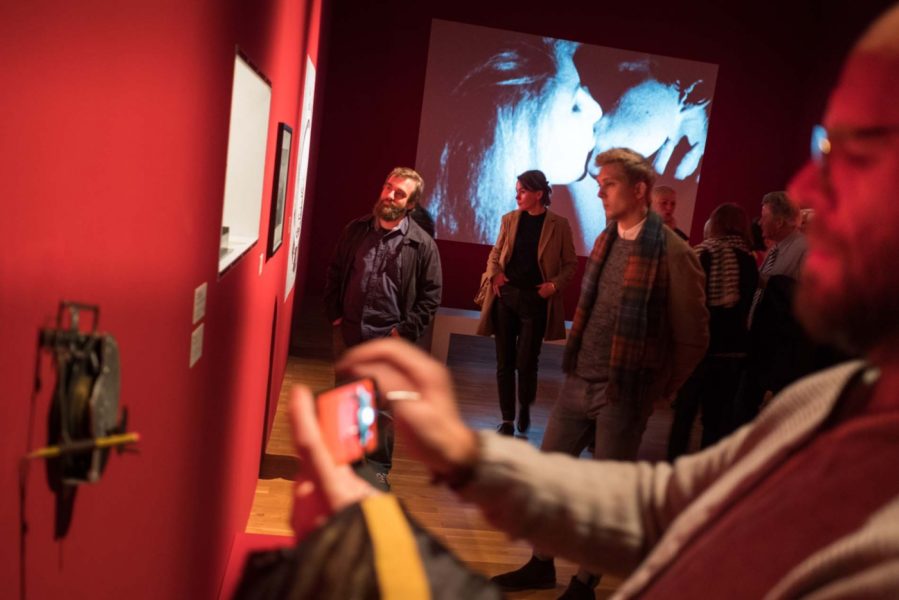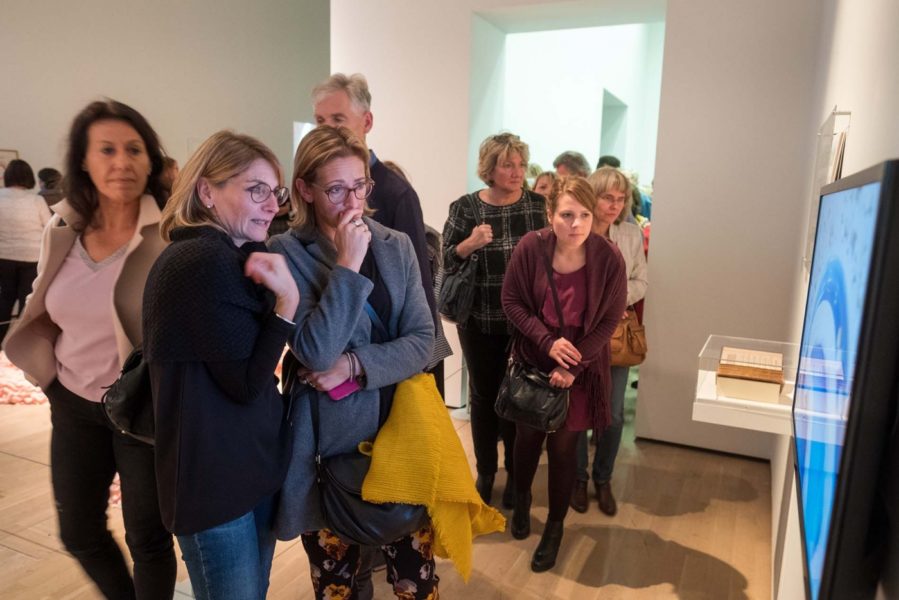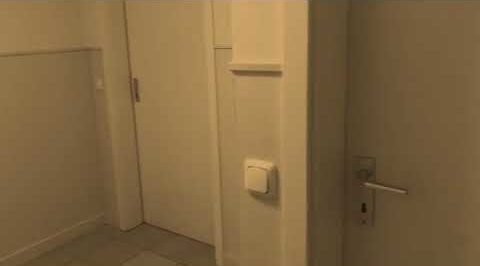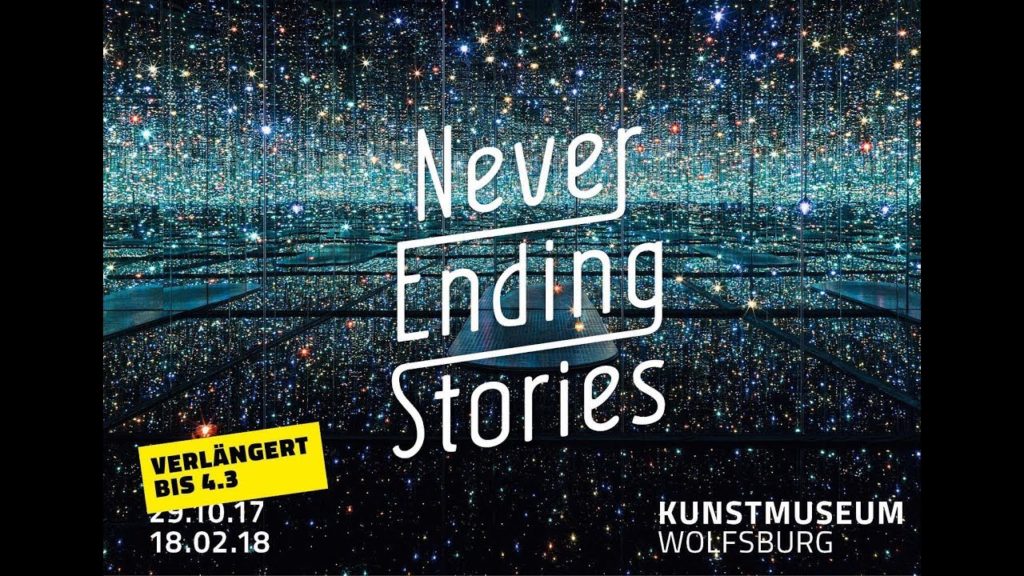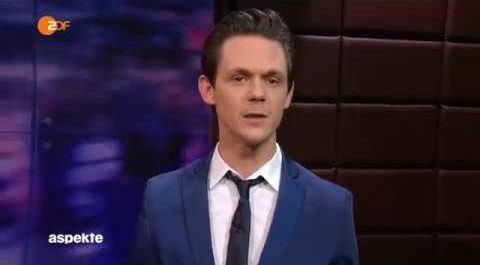Never Ending Stories
The Loop in Art, Film, Architecture, Music, Literature and Cultural History
Installationviews
Info
In today’s world, the loop seems to be virtually ubiquitous—whether in music, on the internet, in video art, or in hotel lobbies and living rooms, where monitors present the endless crackling of an open fire or fish swim around in aquariums. At the same time, the self-contained circuit, the endless loop, has been an essential topos of cultural history and philosophy since antiquity. With “Never-Ending Stories”, the Kunstmuseum Wolfsburg presents, for the first time worldwide, a formally and thematically, as well as spatially and temporally wide-ranging research project dedicated to the interdisciplinary phenomenon of the endless loop in art, film, architecture, music, literature and cultural history.
The architectural parcours developed especially for the gallery and the great hall in the Kunstmuseum Wolfsburg enables numerous mental rotations as well as spatial-physical looping experiences. The scope of the show ranges from the “Ouroboros” octagon—a treasure trove of cultural history—via the “Zen” hall to a square, mirrored “Music Hall”. Anthropologically oriented chapters of the exhibition, such as “Endless Eros,” “The Digestion of the World,” “Politics: Between Vicious Circle and Carousel of Issues,” and “Architecture without End” continually expand into cinema, installation, and self-awareness spaces: spacious black boxes with video loops by, among others, Salla Tykkä, Rodney Graham, and Omer Fast meet up with immersive installations by the likes of Douglas Gordon, Ragnar Kjartansson, and Bruce Nauman. Downright contrapuntally, we can experience Yayoi Kusama’s trance-like, four-by-four-meter infinity of light and Gregor Schneider’s ultimate, five-hundred-square-meter spatial loop “Bad”(Bathroom).
In the museum’s “Loopodrome,” the rarely focused endless loop of happiness in archetypal fairytales—“ … and they lived happily ever after” (Nedko Solakov)—is juxtaposed with the “Circular Reasoning and Reading Machines” of literature, exemplified by James Joyce, Raymond Roussel, and Gertrude Stein, as well as by Johann Wolfgang von Goethe, Georg Büchner, and Julio Cortázar. The chapter “Miracle Machine Film” is dedicated to the multimedia use of the loop from the first kiss in film history in 1896 via Marcel Duchamp’s hypnotic “Anémic Cinéma”, created in 1925, to Thomas Bayrle’s Film “Loop” from 2008. “Man and Machine in a Roundabout” unites Frank B. Gilbreth’s early investigations into work efficiency with the Samuel Beckett-related inefficiency absurdity of Juan Muñoz’s “Living in a Shoe Box”. “The Artist in the Loop” brings together circular self-reflections of protagonists from modern and contemporary art. Whereas Markus Raetz concentratedly spatializes his life’s work, which is permeated with endless loops, Max Grau allows us to experience a fulminant film-score meta-loop: the audiovisual endless loop comments itself.
At the end of the exhibition, a circle in a circle in a circle is closed for the last time … in Sandra Filic’s sound and record player installation “Loop”. The crackling, hissing, and rustling of the lead-out grove of a vinyl record can be heard, over and over again—media-historical nostalgia and, at the same time, idleness in permanence and pure culture: the endlessness of the last groove of a record is but a small signal, and yet, at the same time, the grand finale, where form and content become one.
The Artists
Adel Abdessemed, Abramović/Ulay, Francis Alÿs, Rosa Barba, Robert Barta, Thomas Bayrle, Max Beckmann, Joseph Beuys, Michel Blazy, Étienne-Louis Boullée, Marcel Broodthaers, Philip Corner, Julio Cortázar, Attila Csörgő, Salvador Dalí, Wim Delvoye, Marcel Duchamp, Thomas A. Edison, Maurits Cornelis Escher, Juan Esteban Fassio, Omer Fast, León Ferrari, Sandra Filic, Robert Filliou, Fischli/Weiss, Robert Fludd, Frank B. Gilbreth, Douglas Gordon, Rodney Graham, Max Grau, Anton Henning, Seikô Hirata, James Joyce, William Kentridge, Athanasius Kircher, Ragnar Kjartansson, Kraftwerk, Yayoi Kusama, Stanley Kubrick, Claude-Nicolas Ledoux, Tim Lewis, Sarah Lucas, Guillaume de Machaut, Michael Maier, Matthäus Merian the Elder, Robert Müller, Juan Muñoz, Eadweard Muybridge, Bruce Nauman, OMA, Nam June Paik, Giambattista della Porta, Barbara Probst, Markus Raetz, Bridget Riley, Peter Roehr, Raymond Roussel, Erik Satie, Markus Schinwald, Gregor Schneider, Richard Serra, Shunsô Shôjû, Nedko Solakov, Daniel Spoerri, Gertrude Stein, Donna Summer, Roland Topor, Salla Tykkä, Günther Uecker, Andy Warhol and many more.
The Catalogue
The exhibition is accompanied by an extensive reference work, edited by Ralf Beil, that sheds fundamental and scholarly light on this multifaceted theme and moreover brings together commentaries on the individual exhibited works. The 13 essays written especially for the catalogue by Aleida Assmann, Jan Assmann, Ralf Beil, Norbert Bolz, Claudia Dillmann, Michael Glasmeier, Joachim Kalka, Stefan Klein, Peter Kraut, Niklas Maak, Peter Sloterdijk and Franziska Stöhr encounter work texts by Stephanie Lovász and Michael Schultze as well as source material by Étienne-Louis Boullée, Julio Cortázar, Johann Wolfgang von Goethe, Kraftwerk, Friedrich Nietzsche, Plato and Simon Reynolds. Designed by Eggers + Diaper, the catalogue is published by Hatje Cantz Verlag. The hardcover publication in a German and an English edition encompasses 360 pages with circa 650 illustrations and costs 45 € in the MUSEUM SHOP.
